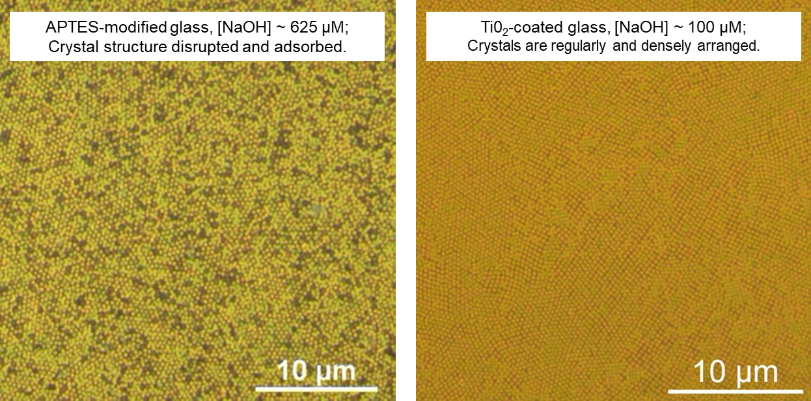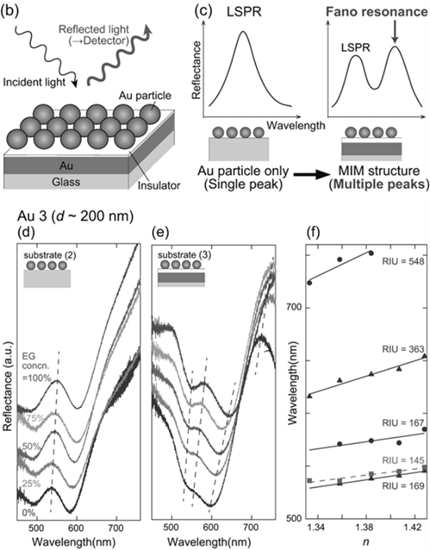Advantage and Core Benefit
- Alternative Surface Modification for Glass Substrates: A novel glass surface treatment employing a TiO₂ layer in place of conventional APTES enables easier tuning of the isoelectric point, allowing electrostatic adsorption of densely packed and well-ordered gold colloidal crystals.
- Highly Sensitive SPR Sensor Development: By fabricating a metal–insulator–metal (MIM) SPR sensor through the immobilization of gold colloidal crystals on a gold-coated substrate via an insulating layer, we achieved approximately twice the sensitivity compared to traditional SPR platforms.
- Broad Application Potential: This technology is expected to serve as a powerful biosensing platform in drug discovery, biomarker screening, viral diagnostics, and food safety testing.
 |
Background and Technology
Two-dimensional (2D) gold colloidal crystals, comprising regularly arranged Au nanoparticles, exhibit excellent plasmonic properties and are ideal for constructing SPR substrates. Conventionally, APTES-modified glass surfaces are used to facilitate electrostatic adsorption of negatively charged colloids but require pH adjustment above the high isoelectric point (~pH 8), necessitating significant NaOH addition. However, high ionic strength can destabilize the colloidal structure, leading to disordered adsorption.
To overcome this challenge, we developed a new surface treatment using titanium dioxide (TiO₂), a metal oxide with a lower isoelectric point. Using a dip-coating process, a TiO₂ thin film was formed on the glass substrate, facilitating stable electrostatic adsorption of Au colloidal crystals with significantly reduced NaOH concentration (less than one-sixth of that required for APTES-modified substrates). The resulting substrates exhibited more uniform and densely packed colloidal crystal arrays.
Furthermore, by immobilizing these crystals onto gold-coated glass substrates, we constructed MIM SPR chips. These chips demonstrated Fano resonance effects due to the interference between localized SPR (LSPR) from the Au particles and propagating SPR from the Au thin film, resulting in enhanced sensitivity.。
 |
Data
- Reduced Alkali Requirement: APTES-modified glass required 625 μM NaOH, leading to disordered adsorption. In contrast, TiO₂-coated glass achieved well-aligned crystal formation with less than 100 μM NaOH.
- Fano Resonance and MIM Structure: The MIM configuration exhibited multiple plasmon peaks arising from Fano resonance, enhancing sensitivity relative to substrates using LSPR alone.
- Refractive Index Sensitivity: Reflection spectra for substrates with ~200 nm Au colloids showed a peak shift nearly twice that of conventional colloid-on-glass structures upon exposure to ethylene glycol (EG) solutions, indicating superior refractive index sensing.
Patent & Publication
JP7253169B2, WO2024181497
Researcher
Dr. Junpei Yamanaka and Dr. Akiko Toyotama (Nagoya City University)
Expectations
We are seeking corporate partners interested in evaluating this technology and collaborating on its development toward practical applications. Under a non-disclosure agreement with Nagoya City University, we are prepared to provide additional unpublished data. Direct meetings with the inventors can also be arranged upon request. Please feel free to contact us for more information.
Project ID: WL-05053


